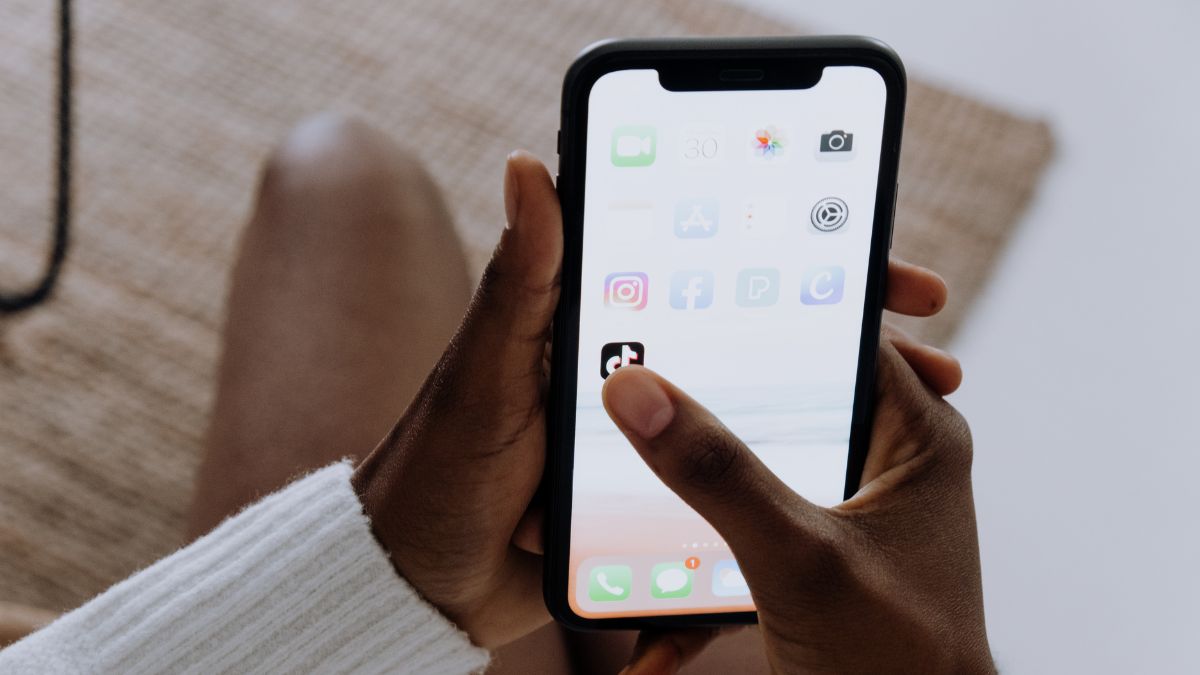TikTok has taken the world by storm, becoming one of the most popular social media platforms where users can create, share, and discover short video clips. Users often come across entertaining or informational videos that they would like to save for later or share with others outside the app.
This article will provide a step-by-step guide on how to save these TikTok videos directly to your camera roll for easy access and sharing.
Saving TikTok videos to your camera roll enables you to view and edit them in other applications without the need to rely on internet connectivity or struggling with limited access within the TikTok app. This process is both easy, and efficient, allowing you to save your favorite videos in a matter of seconds.
Key Takeaways
- Learn how to save TikTok videos directly to your camera roll for offline access and easier sharing
- Understand potential issues and how to troubleshoot them during the saving process
- Be aware of privacy considerations when saving and sharing TikTok videos
Saving TikTok Videos to Camera Roll
Using Save Video Feature
To save a TikTok video to your camera roll directly through the app, follow these steps:
- Open TikTok and find the video you want to save.
- Tap the three-dot icon located at the right corner of the video.
- From the menu that appears, select Save video.
The video will then be saved to your camera roll, usually with a watermark.
Screen Recording Alternative
If you wish to save a TikTok video without a watermark, you can use your phone’s built-in screen recording feature. Here’s how:
For iPhone users:
- Go to Settings > Control Center > Customize Controls.
- Add the Screen Recording option to your Control Center.
- Open TikTok and find the video you want to save.
- Swipe up from the bottom of the screen (or swipe down from the top right corner on newer iPhones) to access the Control Center.
- Press the Screen Recording button, wait for the 3-second countdown, then return to the TikTok app.
- Play the video in full. Once it’s finished, stop the screen recording by tapping the red recording icon in the top-left corner of your screen.
- Your recording will be saved to your camera roll, without the TikTok watermark.
For Android users:
- Swipe down from the top of the screen to access the Notification Panel.
- Find the Screen Recording option (this may vary depending on your device). If it’s not available, you may need to download a third-party screen recording app from the Google Play Store.
- Open TikTok and find the video you want to save.
- Start the screen recording by tapping the Screen Recording button from the Notification Panel or within the app.
- Play the video in full. Once it’s finished, stop the screen recording by swiping down the Notification Panel and tapping the Pause or Stop button.
- The screen recording will be saved to your camera roll, without the TikTok watermark.
Keep in mind that screen recording a video without permission from the video creator may infringe on their copyright. Please respect the creator’s rights and only use the recordings for personal purposes.
Dealing with Potential Issues
Troubleshooting Common Problems
When trying to save a TikTok video to your camera roll, you might encounter a few issues. Here are some common problems and solutions:
- Video not saving: Ensure you have granted TikTok the necessary permissions to access your device’s storage. Check the app’s settings to enable “Save Video” or “Save to Device” options.
- Video quality is poor: Keep in mind that the resolution and quality of the saved video might be lower than what you see in the app. This is due to TikTok’s compression algorithm. There’s not much you can do to improve the saved video’s quality, but you can try using a third-party app to save the video in higher resolution.
- Video is only saved as GIF: When trying to save a video, make sure you select the “Save Video” option instead of “Share as GIF.” Saving as a GIF will result in a low-quality, short, and without sound version of the video.
- Copyright restrictions: Some videos may have copyright restrictions that prevent them from being saved to your camera roll. In such cases, using third-party apps or screen recording to save the video might be your only option, but it’s essential to respect the content creator’s rights and follow the terms of use.
Contacting TikTok Support
If you still face issues saving TikTok videos to your camera roll or encounter any other technical problems with the app, it’s best to reach out to TikTok Support. You can contact them through the following steps:
- Open the TikTok app and tap on the “Profile” tab located in the bottom right corner.
- Tap on the “Settings and Privacy” icon (three dots) in the top right corner.
- Scroll down to the “Support” section and select “Report a problem.”
- Choose the relevant category and sub-category for your issue (e.g., Video & Sound > Save & Share).
- Describe your problem in detail and attach any necessary screenshots or videos to help the support team understand the issue better.
- Tap “Submit” to send your report, and you should receive a response shortly.
Remember to provide clear and concise information in your report to help the support team address your issue efficiently.
Finding Videos to Save
When looking to save TikTok videos to your camera roll, there are different approaches to find the content you want to save. Let’s explore two of the most effective methods: using the search function and browsing hashtags.
Using Search Function
To find specific videos or content creators to save, you can use the TikTok search function in the app. Here’s how:
- Open the TikTok app on your device.
- Tap the magnifying glass icon in the bottom menu to go to the “Discover” page.
- Use the search bar at the top of the page to type in your keywords or a creator’s username.
- Browse through the search results to find the video you wish to save.
By using the search function, you can quickly and efficiently locate videos or creators based on your interests or preferences.
Browsing Hashtags
Another useful method for finding and saving TikTok videos is by browsing hashtags related to your interests. Here’s how:
- Open the TikTok app on your device.
- Tap the magnifying glass icon to access the “Discover” page.
- Scroll down to see a list of trending hashtags or use the search bar to find specific ones.
- Tap on a hashtag to view videos associated with that topic.
- Browse through the videos to find the one you want to save to your camera roll.
Exploring hashtags allows you to discover diverse content from different creators, giving you a variety of videos to save and enjoy offline.
Privacy Considerations
Understanding TikTok Privacy Policy
Before you start saving TikTok videos to your camera roll, it’s crucial to understand the app’s Privacy Policy. TikTok collects a vast amount of user data, which includes your device information, browsing history, and content you have interacted with. When you save a video from TikTok to your camera roll, consider that the video might still have metadata attached to it, revealing when and where it was created.
Saving TikTok videos to your camera roll can also expose the content to other apps and services on your device. Be cautious when sharing these videos on other platforms or with friends, as some information might still be traceable to the original creator who may want the video deleted.
Setting up Privacy Settings
To make sure you maintain control over your saved TikTok videos and their distribution, take the time to set up your TikTok privacy settings. Here are some steps to do so:
- Open the TikTok app and go to your profile.
- Tap the three dots in the top right corner to access settings.
- Select “Privacy” to access your privacy options.
In this section, you can adjust your preferences for:
- Private account: If you set your account to private, only approved followers can view your videos and access your saved content.
- Who can download your videos: This setting lets you control whether or not other users can download your TikToks to their devices. Set it to “No One” to disable downloads.
- Profile visibility in search: Enable or disable your profile from appearing in search results, granting more control over who can find and view your saved content.
By considering these privacy aspects and modifying your settings accordingly, you can better protect your saved TikTok videos and maintain a safe experience while using the app.
Conclusion
By now, you should have a clear understanding of how to save TikTok videos to your camera roll. This can be especially useful when you want to keep a backup of your drafts, share them on other platforms, or simply save a memorable video for later viewing.
To save a TikTok draft to your camera roll on Android, simply go to your profile, tap on Drafts, select the draft video, and tap “Save.” For iPhone or iPad, select the draft video, tap “Next,” change “Who Can Watch This Video” to “Only Me,” tap “More Options,” enable “Save to Device,” and then post it. The video will then appear in your gallery app.
Remember that some users may restrict downloading their videos, but with the provided workaround, you can still save them. Always respect the content creator’s wishes and use the downloaded videos responsibly.
By following the steps mentioned in this article, you can easily save the TikTok videos you love, create a personal collection, or repurpose them as needed. Enjoy creating and saving TikTok videos to your camera roll!
Frequently Asked Questions
How can I save a TikTok video without posting it?
To save a TikTok video without posting it, you can save it as a draft. Once you have created your video, tap on “Next,” then on the “Post” screen, tap the “Drafts” button in the bottom right corner. Your video will be saved as a draft, and you can access it later by visiting your profile and tapping the “Drafts” folder. From there, you can follow the steps to save the draft to your camera roll (see the respective sub-section for details).
What is the method to save TikTok videos without the watermark?
Saving TikTok videos without a watermark requires using a third-party app or website. These tools allow you to download videos without the TikTok watermark simply by pasting the video link or uploading it. Some popular options include snaptik.app (web-based) and Video Downloader for TikTok (Android). Note that downloading content without permission may violate copyright rules.
How do I save a TikTok to my camera roll on an Android device?
To save a TikTok video to your camera roll on an Android device, tap the share button on the right side of the video. Then, tap “Save video.” The video will be downloaded and saved to your device’s camera roll (usually in the “Downloads” folder). Note that this method saves the video with the TikTok watermark.
What is the process to save TikTok drafts to my camera roll?
To save a TikTok draft to your camera roll, go to your profile by tapping the “Profile” button at the bottom of the TikTok app. Then, tap the “Drafts” folder and select the video you want to save. Tap the share icon and choose “Save video” to download the draft to your camera roll.
What is the way to save a TikTok video using a video link?
To save a TikTok video using a video link, first, copy the link by tapping the share button on the video and selecting “Copy link.” Then, visit a TikTok video downloader website or use a third-party app, paste the link, and follow the instructions provided by the tool to download the video. Note that some of these tools can download videos without a watermark.
How can I save an image from a TikTok filter?
To save an image from a TikTok filter, first, apply the desired filter to your video or photo. For a video, pause the video at the desired frame, then take a screenshot (using your device’s built-in screenshot functionality). For a still image, tap and hold on the preview screen with the filter applied and take a screenshot. The image will be saved to your device’s camera roll.

Cardi “likes to party” Clark has 15+ years of designing, planning, and executing successful parties and events. Highly skilled in event strategy, management, planning, and execution with a track record of exceeding expectations. I make it happen. I get it done and people have fun!









